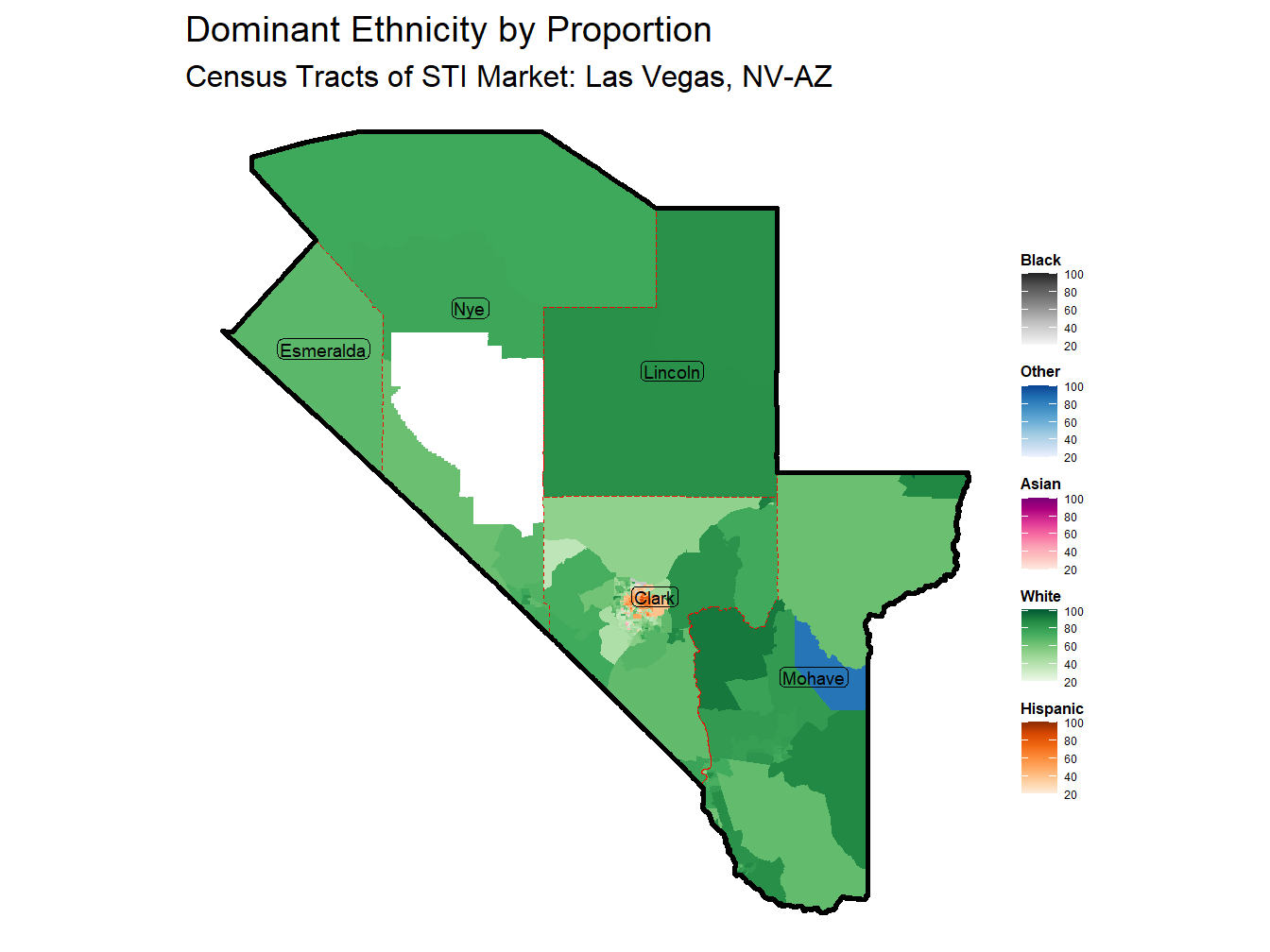Culture
Cultural identity of an area is often the product of the population’s Ethnicity, Ancestry, Language, and Religious Beliefs. This report will cover these areas for the Las Vegas, NV-AZ Market.
Ethnicity
Racial groups in the US often include White, Black, Asian, and Other. In a similar context whether or not a person is of Hispanic origin is also typically a defining characteristic of ethnic identity. The following reports look at 5 ethnic categories, Hispanic, and non-Hispanic: White, Black, Asian, and Other.
Largest Ethnicity - White
The White Ethnicity makes up the largest share of the Population in the Las Vegas, NV-AZ Market at 43.4%. This is yields a location quotient of 0.75 time the national average. Subsequently the Las Vegas, NV-AZ Market ranks 147th in the proportion of White Population across STI Markets.
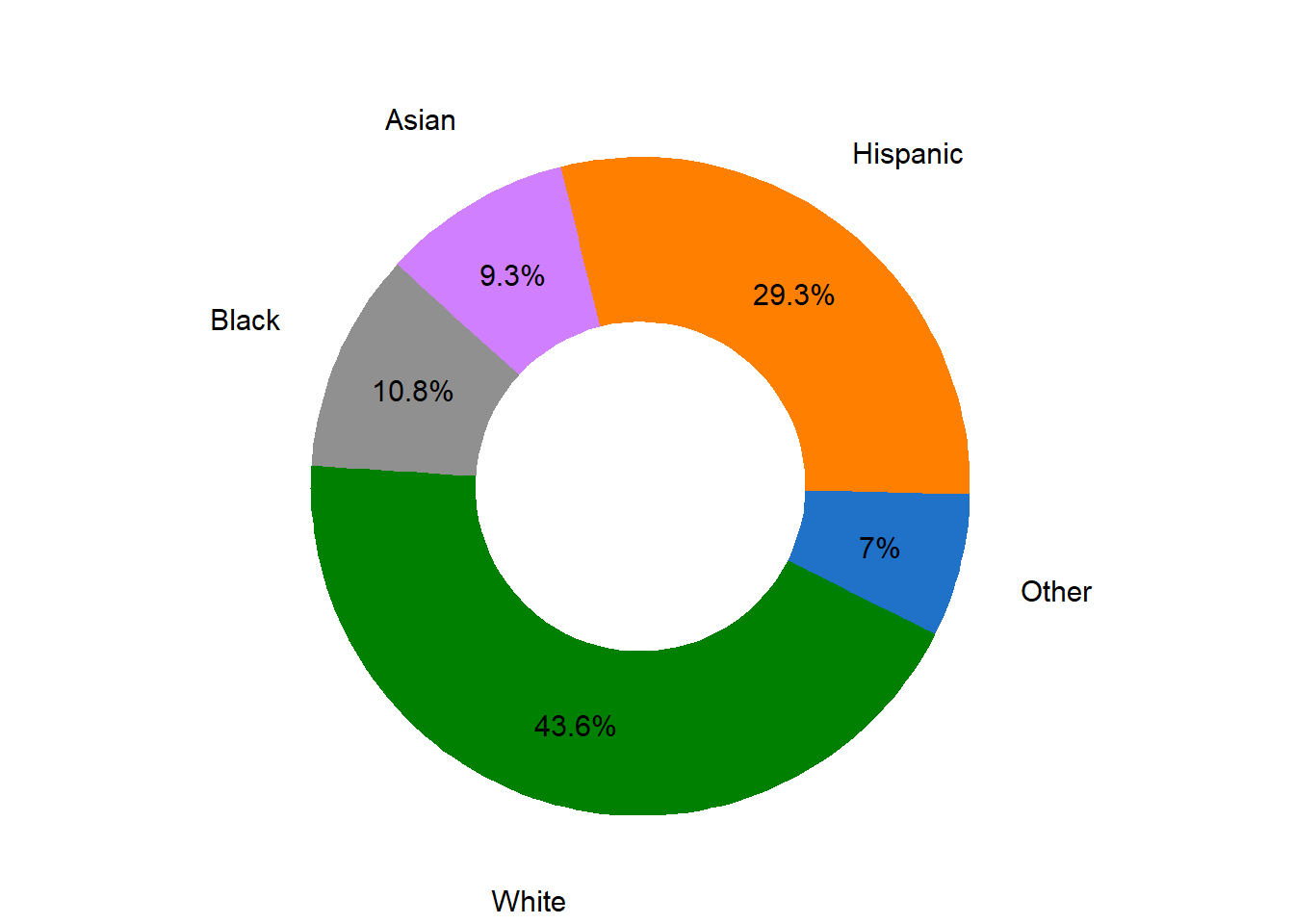
Figure 11: Ethnicity Proportion in Market
Notable Ethnicity - Asian
The proportion of Asian Population in the Las Vegas, NV-AZ Market is notable. This ethnicity comprises 9.5% of the market’s population, yielding a location quotient of 1.64 time the national average. Subsequently the Las Vegas, NV-AZ Market ranks 12th in the proportion of Asian Population across STI Markets.
Ancestry
Ancestral origin across the US is quite varied with small communities existing from most parts of the world. Many of the smaller Ancestry groups are combined to “other” categories from the predominate larger ancestral region. Unclassified amount is also high among those that don’t know or give their ancestry or give a response that is uncommon. These categories will be excluded from the following reports and include the Other Hispanic, Other Asian, Other European, Other, and Unclassified Ancestries.
Largest Ancestries - Mexican, African American, and Filipino
Large ancestries in the Las Vegas, NV-AZ Market include Mexican, African American, and Filipino . These ancestries make up 21.5%, 7.8%, and 5% of the total population, respectively. When comparing to national proportions, the Filipino ancestry is the most notable with a location quotient of 5.56 the proportion of this ancestry ranks 2nd across STI Markets.
Sub-Market Ancestry Dispersion
Looking at those 3 Ancestries, which are most prevalent across the market.
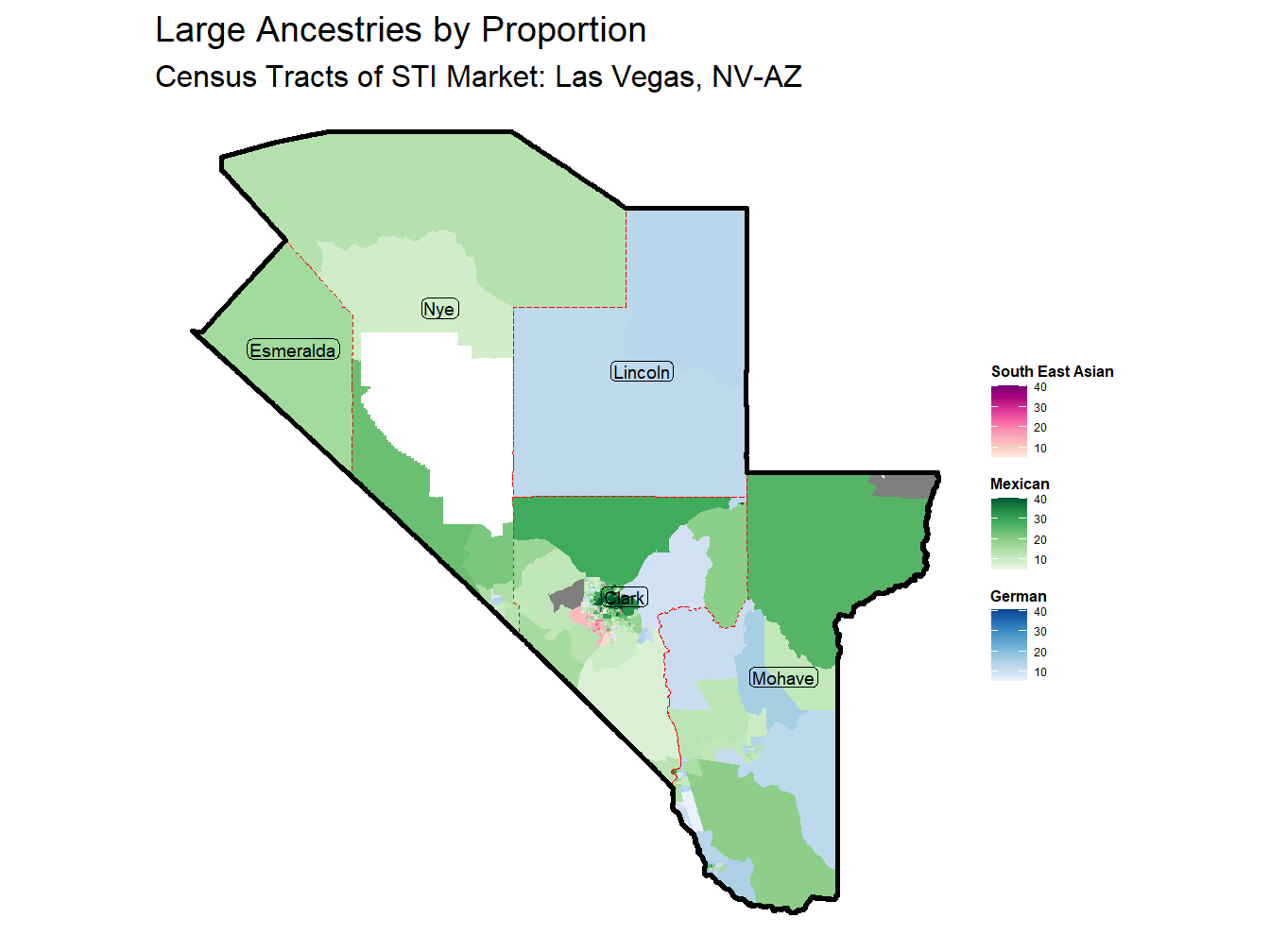
Figure 13: Ancestry Thematic
Other Notable Ancestries - Hawaiian PI, Japanese, and Cuban
The Las Vegas, NV-AZ Market is also home to a larger than average share of people with Hawaiian PI, Japanese, and Cuban Ancestries. These ancestries account for 0.8%, 0.4%, and 1.4% of the population, respectively. With location quotient of 4, 2, and 1.75 the Hawaiian PI, Japanese, and Cuban Ancestries rank 6th, 8th, and 5th across STI Markets, respectively.
Language
English is the predominate language across the US. There are however a number of other languages spoken depending on the market. Languages considered in this report include the Spanish, French, German, Slavic, Other Indo Euro, Chinese, Korean, Vietnamese, Other Asian, Tagalog, Arabic, and Other languages. The following is a look at the degree and dispersion of Non-English languages and language groups spoken in the Las Vegas, NV-AZ market.
Non-English Languages - Spanish, Tagalog, and Chinese
The most widely spoken Non-English Languages in the Las Vegas, NV-AZ Market include Spanish, Tagalog, and Chinese . These languages make up 20.3%, 3.2%, and 1.3% of the over 5 population, respectively. When comparing to national proportions, the Tagalog language is the most notable with a location quotient of 5.33 the proportion of this language ranks 3rd across STI Markets.
Sub-Market Language Dispersion
Looking at those 3 languages, which are most prevalent across the market.
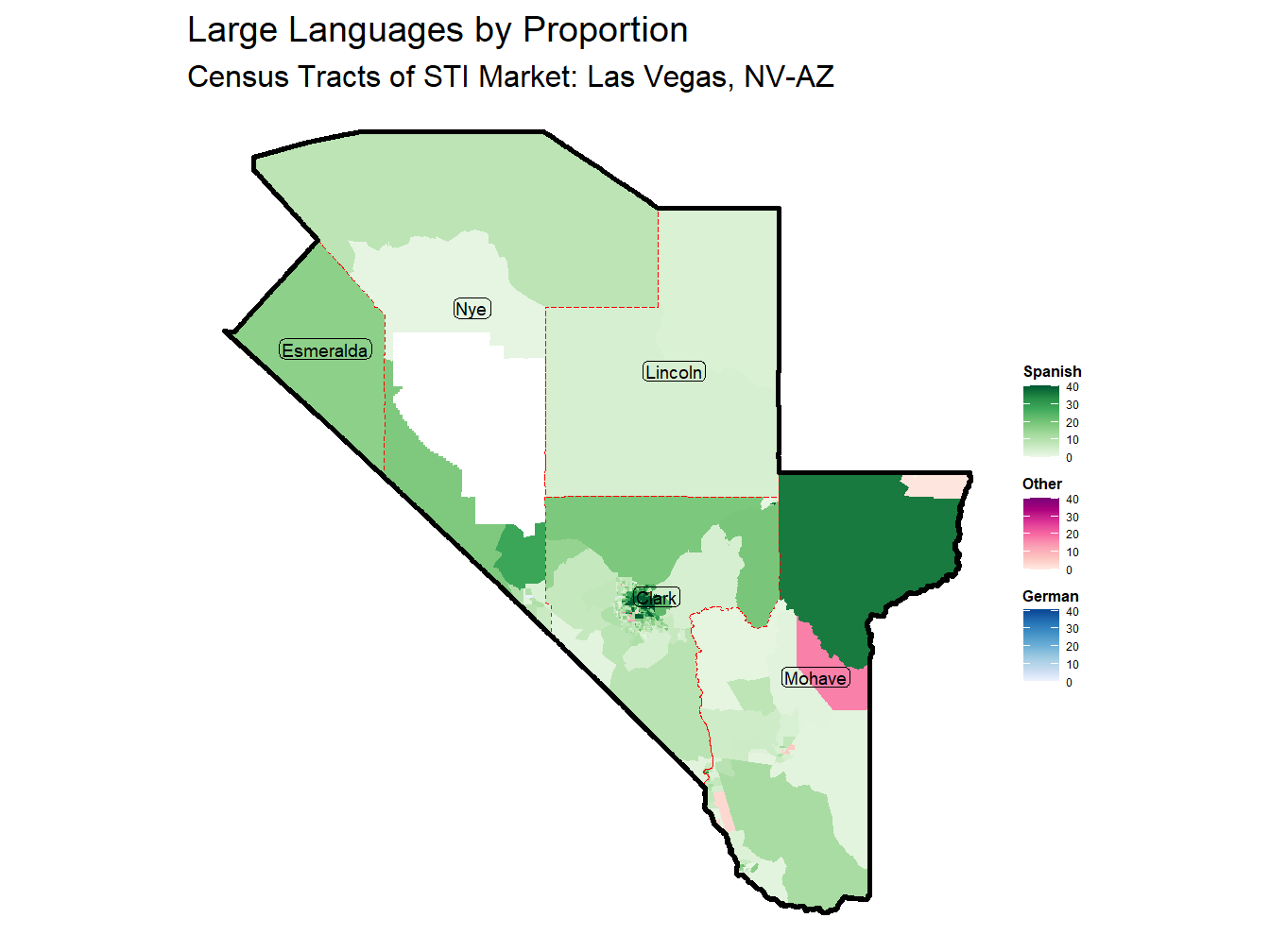
Figure 14: Language Thematic
Other Notable Languages - Korean and Other
The Las Vegas, NV-AZ Market is also home to a larger than average share of people who speak Korean and Other languages. These languages account for 0.5% and 0.9% of the over 5 population, respectively. With location quotient of 1.67 and 1.12 the Korean and Other languages rank 13th and 23rd across STI Markets, respectively.
Religion
66% of the population in the Las Vegas, NV-AZ Market is of unknown religious affiliation. This category is generally made up of those that are not religiously affiliated, though a small fraction may represent dharmic religions. This level of unknown religious affiliation ranks 11th across STI Markets. The following looks at the remaining 34% of the population that are affiliated.
It should also be noted that nationally approximately half of the religiously affiliated population would be considered Christian Protestant. This classification however encompasses many denominations with various beliefs and practices. We have subsequently grouped these church congregations by denomination and by a classification of Mainline and Evangelical disposition. You will see these groups described with ML and E respectively where a breakout by denomination is given and in other cases they are listed in total as simply Mainline or Evangelical.
Laregest Religions - Catholic, Mormon, and Evangelical
The 3 largest main religions in the Las Vegas, NV-AZ Market are Catholic, Mormon, and Evangelical . These religions make up 52.5%, 18.2%, and 15.1% of the affiliated population, respectively. When comparing to national proportions, the Mormon religion is the most notable with a location quotient of 4.44 the proportion of this religion ranks 7th across STI Markets.
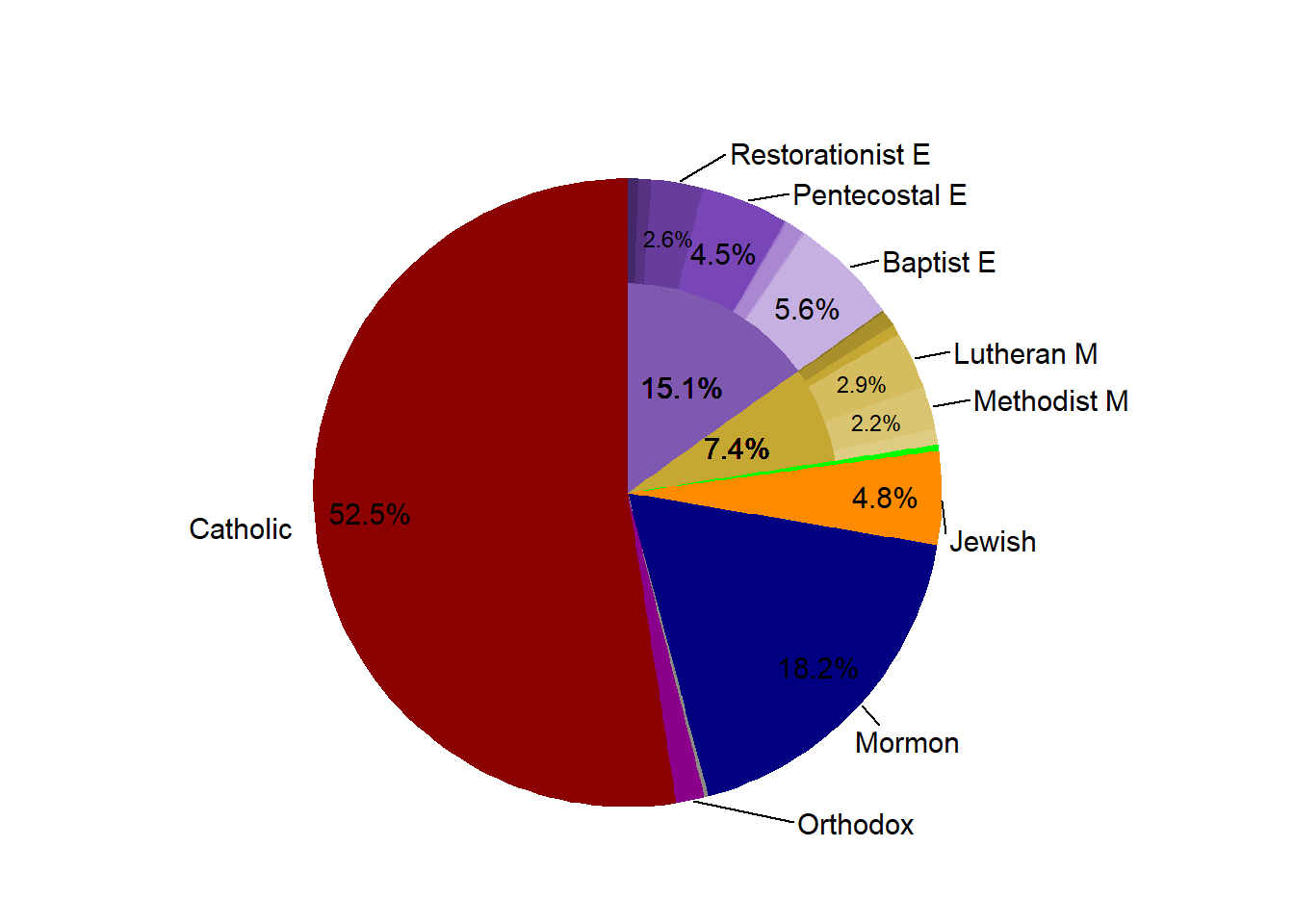
Figure 15: Religous Proportion in the Market
Sub-Market Religious Dispersion
In the following map we look at those 3 largest religions and then group the remaining into a “Other” category.
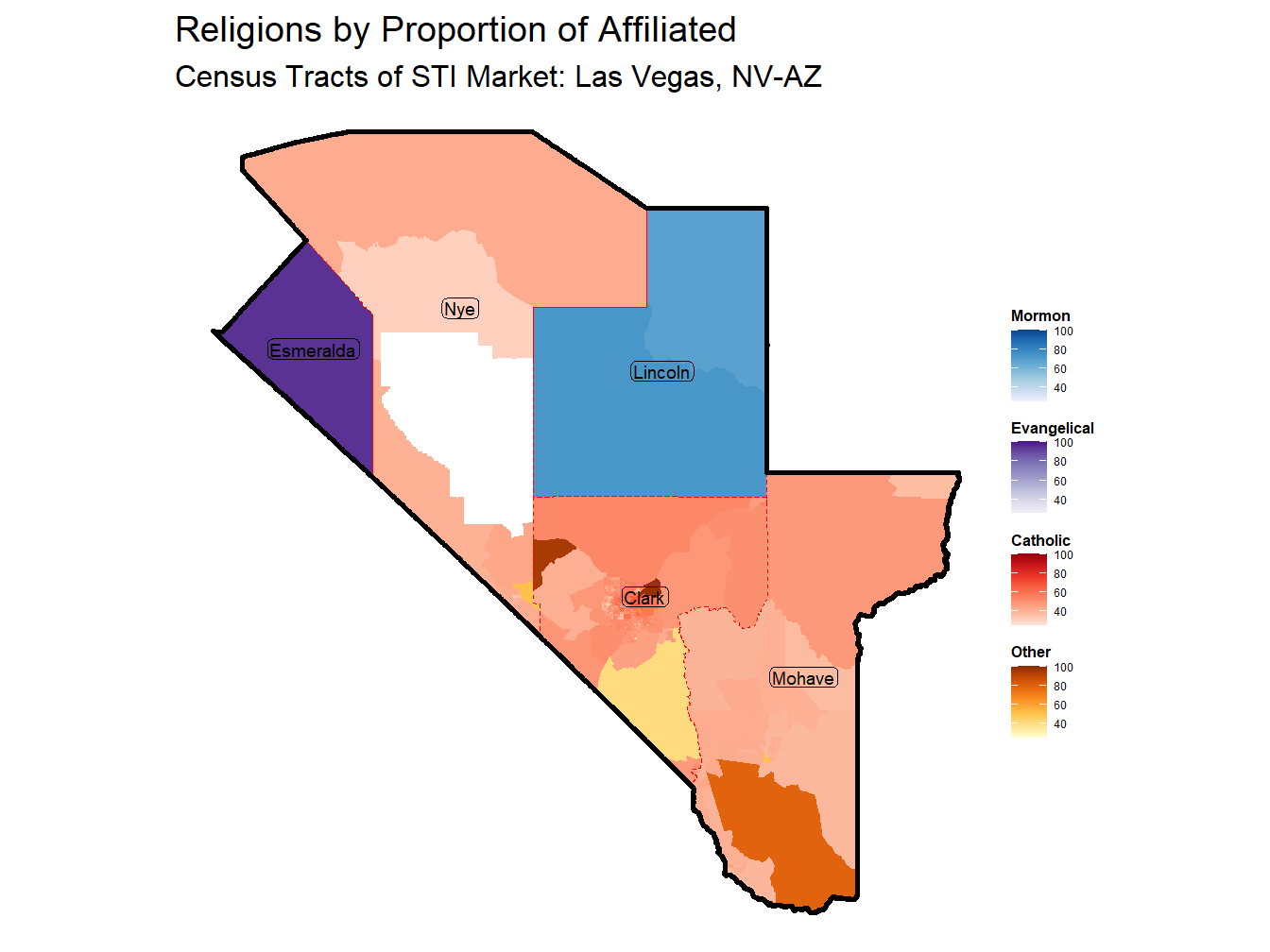
Figure 16: Religous Thematic
Other Notable Religions - Jewish and Orthodox
The Las Vegas, NV-AZ Market is also home to a larger than average share of Jewish and Orthodox religiously affiliated Population. These religious groups account for 4.8% and 1.5% of the religiously affiliated Population, respectively. With location quotient of 1.66 and 1.36 the Jewish and Orthodox religions rank 8th and 20th across STI Markets, respectively.
